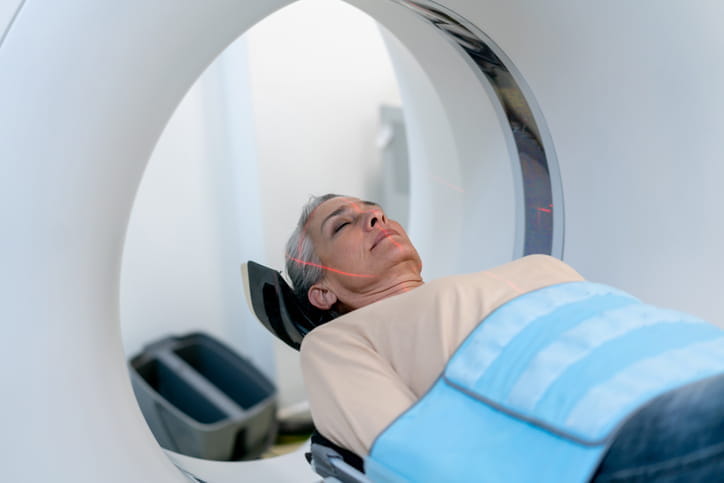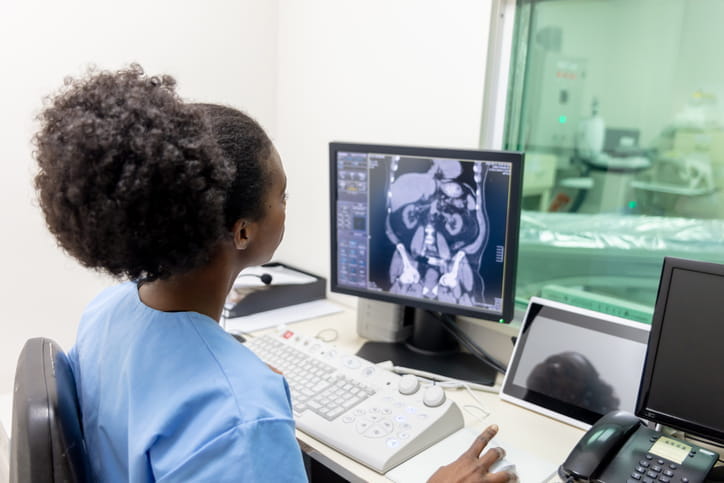
Many may think a CT and MRI scans are essentially the same thing. While it’s true they’re similar in some ways, a CT scan and an MRI scan are very different procedures. Keep reading to learn more about the differences between these two.
What Is An Mri?
According to the Mayo Clinic, an MRI (magnetic resonance imaging) uses magnets and radio waves to get detailed images of the inside of a body. During an MRI scan, you’ll lay still on a table that moves you inside a large donut-shaped machine. The machine takes 3D images of the area being scanned. This can take anywhere from fifteen minutes to more than an hour, depending on the extent of the scan(s). Depending on the scan, they may inject contrast material to make the images appear clearer.
What Does An MRI Show?
An MRI is ideal for looking for inflammation in the body and may be better for getting a detailed look at the brain or spinal cord. According to Dr. Melissa Chen, who was interviewed by the MD Anderson Cancer Center, an MRI can also be better for distinguishing between cancerous and non-cancerous tissue. Therefore, your doctor may want you to get an MRI if a CT scan has found suspicious abnormalities someplace in the body.
When An MRI May Be Better
- When neurological symptoms are already present
- When looking for a specific cancer that is better detected with an MRI
What Are the Downsides To An MRI?
- Not an option for those with any metal or electronic devices in their body, such as shrapnel, metallic surgical implants, certain pacemakers, cochlear implants, etc.
- Possible allergic reactions to contrast material
- Have to remain very still
- Claustrophobic
- Loud
- Time-consuming
What Is A CT Scan?
According to the Cleveland Clinic, a CT (computed tomography) scan uses X-ray technology and computer technology to create elaborate 3D images of the inside of a body. During a CT scan, you lay on a table, and the machine moves around you to get pictures of the inside of your body. Depending on the scan, they may inject contrast material to make the images appear clearer.
What Does A CT Scan Show?
- The skeletal system
- Soft tissues
- Organs
- Blood vessels
- Muscles
CT scans can aid in diagnosing the following conditions:
- Certain types of cancer
- Heart disease
- Broken bones
- Kidney stones
- Issues with the bowels
- Internal bleeding
- Blood clots
- Damage to the brain or spine
Benefits of a CT scan
- It is ideal for detecting diseases and cancers in the lungs, bones, heart, bowels, etc.
- Faster
- Best for diagnosing internal injuries quickly
- Likely the only option for people with metal inside their bodies
- Easier for those who are claustrophobic
Related: Common Questions About CT Scans
Are There Any Downsides To A CT Scan?
There are minimal risks to a CT scan. The Cleveland Clinic notes that CT scans, like any other type of X-ray, expose you to modest amounts of ionizing radiation. They also note that allergic reactions to contrast material are a slight possibility. According to Dr. Melissa Chen, doctors strive to minimize radiation exposure as much as possible.
Book your non-invasive scan at Preventative Diagnostic Center today for ultimate peace of mind.
Mri Vs. Ct Scan
An MRI scan is preferable for issues involving the brain or spinal cord. When treating cancer and other serious health problems, MRI and CT scans will often be used together to get the best idea of where the affected area is located and find the safest and most effective treatment for the individual.
Related: Does a Chest CT Scan Show Inflammation?
What Are The Differences Between An MRI And A Ct Scan?
Dr. Melissa Chen explains the biggest difference between MRI and CT scans is they each provide different types of images. She explains that an MRI scan is better at distinguishing different tissue types, making it ideal for differentiating between cancerous and non-cancerous tissue. In contrast, CT scans are better at showing exactly where the “edges” of things are (such as a tumor or an organ). This is why they are often used together before developing treatment plans for a serious condition.
Is A CT Scan Better Than An MRI?
This often depends on the individual patient’s condition. In cases where time is of the essence, a CT scan will always reign supreme as it is far quicker. But for a preventative medical scan, the ideal scan will depend on:
- The part of the body being scanned: CT scans may be better for most parts of the body, but an MRI is generally superior for the brain or spine
- Price: CT scans are usually cheaper. According to GoodRx Health, an MRI scan can cost between $400 and $12,000, and a CT scan can cost between $300 and $6,750.
- Personal health/comfort levels: If the patient is claustrophobic or has any metal in their body, an MRI may not even be an option
- Image quality: An MRI tends to get a clearer picture of a specific body part. However, when it comes to a preventative medical scan, it is likely not worth investing your time and money unless something abnormal is found on a CT scan.
When deciding between a CT scan and an MRI scan, it is often important to know what part(s) of the body each is better at getting images of. A preventative medical scan can provide great peace of mind and, in some cases, may even be lifesaving.

